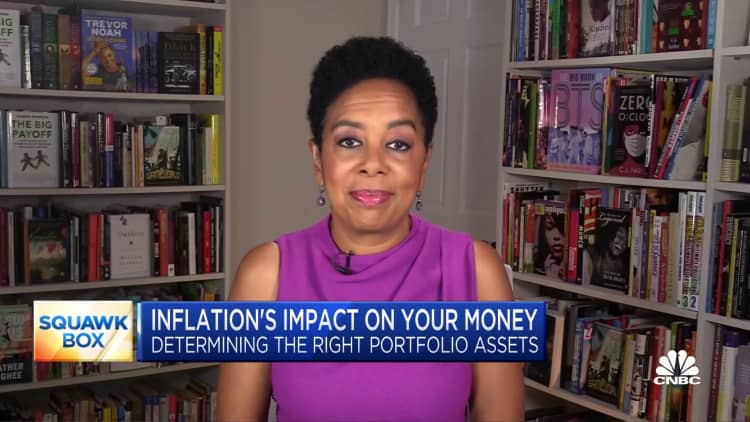Just like that, there's one month left in the year.
There's no better time than now to start thinking about what you can do to start the next year off on the right financial footing.
"People start to put their whole life in perspective in December," said Tom Henske, a certified financial planner in New York.
"Your head is already there with everyone else, so why wouldn't it be with your money habits?"
More from Invest in You:
Half of Americans with retirement accounts have taken an early withdrawal
9 money moves to make before becoming your own boss
How to score a charitable giving write-off if you don't itemize deductions
There are also moves you can make that have Dec. 31 deadlines.
"If you plan ahead, then that makes a pretty dramatic difference in your overall retirement financial planning needs," added Winnie Sun, co-founder and managing director of Irvine, California-based Sun Group Wealth Partners.
Here's how you can get a jump start on a financially healthy 2022.
Change your mindset
Fear of the unknown holds many people back from taking the first step towards financial wellness, Henske said.
Whether it is setting up a child's 529 savings plan, getting insurance or drafting your will — just get started, he said.
"If you want to procrastinate, procrastinate when the meeting is going to be," Henske advised. "Don't procrastinate scheduling the meeting."
Max out your retirement plans
The annual contribution limit for employee-sponsored retirement plans, such as a 401(k), is $19,500 this year, or $26,000 if you are age 50 or over.
If you can, try to max out your contributions. If you can't, at least try to contribute enough to get the full company match.
"That's free money," Sun said. "Don't leave it on the table."

Then, if you have already maxed out your 401(k) or don't have one, do the same with your individual retirement account or Roth IRA. The maximum contribution this year is $6,000, or $7,000 if you are age 50 or older.
Even though you have until April 15 to max your retirement savings account out for 2021, doing it now will enable you to start saving for 2022 in January, Sun pointed out.
Look at your budget
What did you spend money on this past year?
Look at your credit card statements — many lenders even break down the expenses by category for you. See where you can adjust for the following year.
If you need to bring more money in, consider taking on a side hustle, asking for a raise or finding a new job. January and February are the best times of year to job-hunt because that is when companies' new hiring budgets tend to go into effect.
Review your investments
While you should always periodically review your portfolio, now is a good time to check and make sure your assets are balanced. So, if you have gone above your 10% allotment in large-cap growth stocks, for example, make adjustments so it goes back to 10%.
If you sold any assets and made a profit, consider selling an asset that isn't doing so well. It's called tax-loss harvesting. By selling assets at a loss, it will make up for some of the gains you made and should reduce the amount of taxes you will have to pay.
You can also gift assets that have gone up to someone in a lower tax bracket to avoid tax hit, Sun suggested.
Check your medical expenses
If you still have money left in your flexible spending account, you may want to make that doctor's appointment you've been putting off or buy qualified items so that you get the reimbursement for this year.
While legislation signed into law late last year allows you to roll over any unused FSA funds into 2022, your company has to opt in. Some employers also give a grace period of a few months into the next year or permit you to carry over $550. If you still have money in the account, check with your employer to make sure you don't lose it.
Go on autopilot
While people have the best of intentions to get their financial life on track at the beginning of the year, things begin to fall apart as the year goes on. By setting up automatic transfers from your checking to your savings or investment account, you can avoid that, Henske suggests.

"What some people will do is hem and haw over the amount," he said.
"Be OK with putting $25 per month and just get it connected and going," Henske added. "It is easy to go in and change it from $25 to $250 per month."
Also check on your 401(k) contributions for next year. While the limit for IRAs is staying the same, at a $6,000 max contribution, the 401(k) maximum is increasing to $20,500. Catch-up limit for those age 50 and over remains at $6,500.
SIGN UP: Money 101 is an 8-week learning course to financial freedom, delivered weekly to your inbox.
CHECK OUT: Former financial advisor who's managed over $140 million: Here's my best advice for new investors with Acorns+CNBC
Disclosure: NBCUniversal and Comcast Ventures are investors in Acorns.






